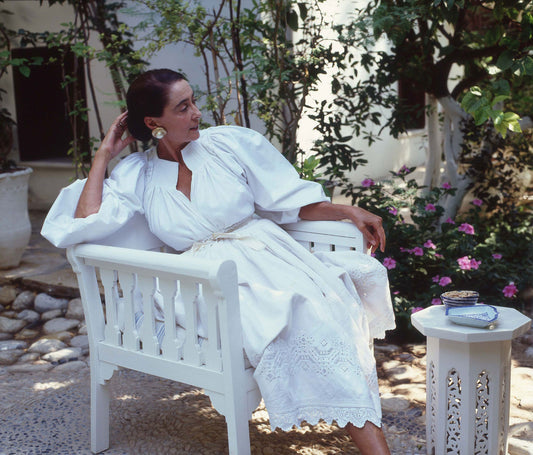Nishapur is an ancient Sassanian city located in Iran’s fertile plain, in the northeastern province of Khorasan. Nestled between mountains and desert, it served as a corridor for merchants, armies, and curious travelers on the Silk Road en route to Asia Minor and Mesopotamia in the west, and China and India in the east. The mercantile city was so renowned that Yaqut al-Hamawi coined it, in his famous 13th century tome Dictionary of Countries, “the gateway to the East ''.
The city was captured by the Mongols in the high Middle Ages and soon thereafter suffered a decline; a new focus on neighboring cities like Mashed saw decreased visitors and the transfer of important institutions away from Nishapur. Today Nishapur is an average mid-sized Iranian city, but in the 10th century the bazaar bustled with international trade in silks, furs, fine potteries; the exchange of ideas, aesthetics, and poetry. One 10th century writer penned:
“It produces various kinds of fine linens, cotton goods, and raw silk, all of which (because of their excellence and abundance) are exported to other lands of Islam and Christendom; for kings themselves and nobles value them as wearable apparel.”
In the 1930’s, the Metropolitan Museum of Art in New York was undergoing an extensive Iranian expedition and, in 1935, set up camp in what was ancient Nishapur. In collaboration with the Musé Iran Bastan in Tehran, excavations in Nishapur underwent a 12-year period; they uncovered some of the most significant artifacts contributing to our understanding of the aesthetics of Islam and the East, and the culture of the Silk Road.
Excavation map of the site at Nishapur, 1947, courtesy of the Metropolitan Museum of Art, New York City.
The impressive works uncovered at Nishapur are numerous – engraved silver, glassware, ornamental tiles, and paintings in black polychrome and white plaster – but what has been of particular interest is the discovery of Nishpur’s distinctive earthenware. Many of the glazed potteries from Nishapur feature birds and falconers, horses and kings – these are referred to as the animated potteries of Nishapur. On the other hand, there are the calligraphic ceramic works that are lauded by connoisseurs of Eastern design.
For LEVANT, Nishapur calligraphy pottery is an emblem of our aesthetic language; bold and sinuous, geometric and poetic.
The calligraphy pottery of Nishapur is decorated in Kufic style lettering – with the Arabic forms elongated so as to become abstract. For LEVANT, Nishapur calligraphy pottery is an emblem of our aesthetic language; bold and sinuous, geometric and poetic, employing the aesthetics of Islam and the East to a dazzlingly contemporary effect.
A 10th century Nishapur Calligraphy bowl, documented by the Metropolitan Museum of Art on site in Nishapur circa 1947.
What is perhaps so striking and unique about the works of Nishapur is the artisans’ mastery over the use of void and space in their compositions, particularly in a period also noted for its heavy ornamentation and extravagant surface design. Nishapur designs were simple, powerful, and refined.
The Kufic reads "Planning before work protects you from regret; prosperity and peace."
The abstracted calligraphy had an aesthetic appeal to Persians and their neighbors in the 10th century, but also served as talismans. Many have phrases from the Qur’an, while others are simply adorned with Arab proverbs. LEVANT’s favorites include:
"Knowledge is an ornament to youth and intelligence is a crown of gold in paradise."
“Restraint is at first bitter to the taste, but in the end sweeter than honey.”
“Be aware of the fool, do not associate with him, and do not disregard the bewildered admirer."
LEVANT’s Calligraphy Collection
LEVANT's Calligraphy Serving Bowl in black and white.
LEVANT's Calligraphy Serving Bowl, side view.
LEVANT had the pleasure to collaborate with Ahmed, a ceramicist trained in the Egyptian ceramic center of Fayoum and residing in the Chouf Mountains in Lebanon. Ahmed’s works are hand-thrown red terracotta with white slip glazes, much like the works of the prolific ateliers of Nishapur.
LEVANT's Calligraphy Plate, in black and white.
LEVANT's Calligraphy Serving Bowl.
A small capsule of abstracted calligraphic designs on clay forms that recall the Silk Road. In the tradition of the Sassanids, we worked with organic glazes in black and white, blue and yellow. In hand, these pieces feel like living artifacts that could live as easily in a display vitrine as on a table by the sea. An ode to the austere beauties of Nishapur. Shop the collection here.












